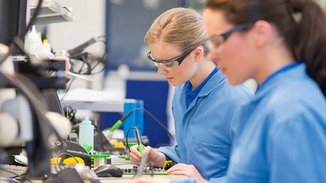智能管理将使更多发明进入市场
Smarter Management Means More Inventions Get to Market
翻译:张心茹
审校:许楠
“In the United States we spend about $160 billion a year on R&D. And so for the last seven years we’ve spent about a trillion dollars. With about 250,000 inventions that are sitting on the shelf that have more than 13 years of patent life, and only 0.5 to 0.7 percent of the inventions that are federally funded get out a year. So, what does that mean, get out? That they’re actually commercialized—they’re found and then they’re commercialized.”
“美国每年在研发上投入了1600亿美元,如此算来,过去七年间我们总计投入了约10千亿美元。其中有约25万项专利期超过十三年的发明被束之高阁,每年只有0.5%到0.7%获得资助的发明成功输出了。“成功输出”是什么意思呢?它意味着实质上的商业化,即被发掘且商品化。”
Rosemarie Truman, founder and CEO of the Center for Advancing Innovation, a Washington D.C.–based nonprofit. She spoke at the first “Science Meets Congress” event on November 15th on Capitol Hill. Scientific American and Nature Research partnered with California Congressman Jerry McNerney—he has a doctorate in math, by the way—to host the session, which focused on “Energy Solutions for a Sustainable Future.”
这句话出自11月15日在国会山举行的首届“科学与议会会议”(Science Meets Congress)上Rosemarie Truman的发言,她是创新优化中心(Center for Advancing Innovation)的创始人兼首席执行官,该中心是华盛顿特区的一家非营利组织。“科学与议会会议”由《科学美国人》、《自然》杂志社和拥有数学博士学位的加利福尼亚州议员Jerry McNerney共同举办,会议的主题是“寻找能源解决方案,为了可持续的未来”。
“So some of the challenges that we have are, first of all, finding these inventions. I just mentioned the ones that are patented, so you can find them through the USPTO. But there are about five times to 10 times the amount that are not patented that are not disclosed. So the energy efficiencies and tools of the future could be sitting there on the shelf, either patented or not…
Rosemarie Truman 说“我们当下面临的挑战有:首先在于如何发掘这些发明,对于我刚刚提到的那些已经注册专利的,我们可以在美国专利及商标局找到;但是还有为数五倍甚至十倍的发明未注册专利,亦不为人所知,因此未来高效能源可能正被我们束之高阁,它们或许注册了专利,或许还没有”,
“What are I think our big opportunity is in the United States is to significantly change the way we harness our intellectual property. So when we give out this $160 billion a year to different organizations—universities, hospitals, research institutes across the U.S.—we govern it properly. So the inventions become disclosed and we have a clearinghouse for all the inventions. And we have a systematic approach to harmonizing the data around the inventions so that you can actually mine it, characterizing it, and then making it searchable so that you only have to go to one place.”
“我认为改变知识产权利用方式将给美国带来巨大机遇。在我们向大学、医院以及研究所等全美不同机构提供总计1600亿美元的研发资助的同时,还需要适当地管理,以使发明公之于众,同时也让我们掌握所有发明的情况,并且我们还要拥有系统性的方法以统一协调专利的相关数据,借此手段人们将可以一站式发掘、特化以及宣传专利”。
Listen for more from this session on an upcoming episode of the long-form Scientific American podcast, Science Talk.
更多会议信息即将登陆科学美国人广播Science Talk,敬请期待。
—Steve Mirsky

 京公网安备11010502039775号
京公网安备11010502039775号  京公网安备11010502039775号
京公网安备11010502039775号 
















